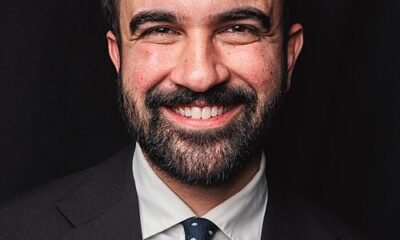Entertainment
‘The Marvels’ Post-Credits Scene Cameo Is a Major Spoiler on November 10, 2023 at 5:01 am Us Weekly
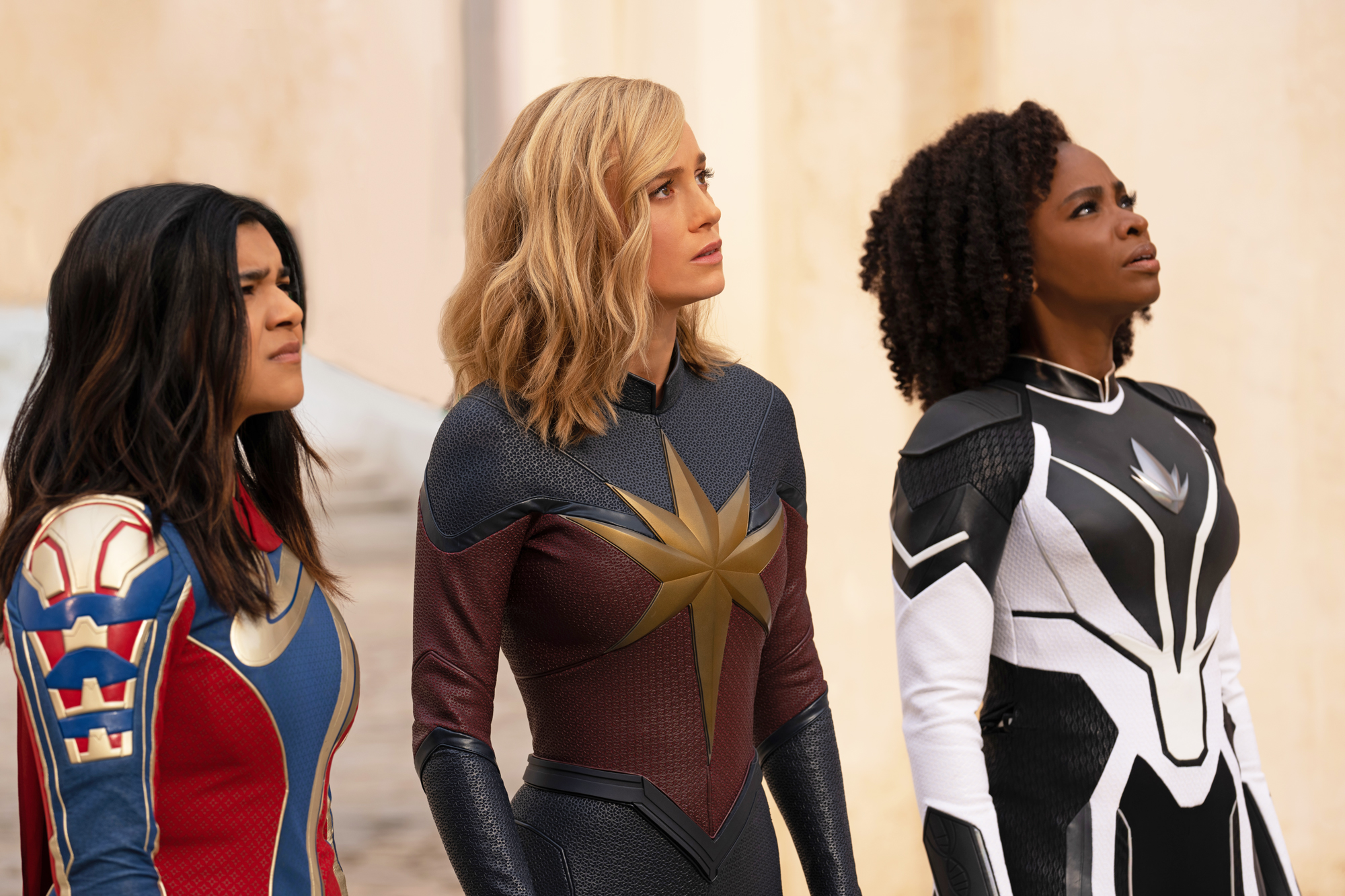
Iman Vellani as Kamala Khan, Brie Larson as Captain Marvel, and Teyonah Parris as Captain Monica Rambeau Laura Radford/Marvel Studios
The Marvels post-credits scene included a major cameo that had Marvel Cinematic Universe fans cheering.
[Spoiler Alert: The Marvels spoilers are below, including the ending and surprise appearances from other superheroes.]
By now, fans know to stay through the credits of a Marvel Studios movie. However, The Marvels — which was released Friday, November 10 — only included a mid-credits scene. While those who stay to the very end of the credits will be treated to a fun flerken sound effect, the only real post-credits clip in the Captain Marvel sequel comes after the animated segment listing the cast and creative team.
The scene shows what happened to Monica Rambeau (Teyonah Parris). She sacrificed herself to save the universe. The villainous Dar-Benn’s (Zawe Ashton) plan left a tear between their reality and another one that Monica could seal with her powers — but only if she stayed on the other side. She conveniently didn’t tell anyone about her plan to be a martyr until it was too late for Carol Danvers/Captain Marvel (Brie Larson) to save her.
The post-credits scene shows Monica waking up in a hospital. She sees someone who looks like her late mother, Maria Rambeau (Lashana Lynch). Monica starts saying how much she missed her, and the woman who looks like Maria says that their patient seems disoriented. (It’s also worth noting that Maria wears a red and white superhero suit that looks an awful lot like comic book character Binary’s costume.)
Who is Alternate Universe Maria talking to? Oh, just Beast/Hank McCoy — ONE OF THE FREAKING X-MEN. Kelsey Grammer reprises the role he played in 2006’s X-Men: The Last Stand and 2014’s X-Men: Days of Future Past. He says that the scans make it seem as though she’s from a parallel reality. He quickly leaves, explaining that he’ll give Dr. Charles Xavier an update and Monica is left reeling.
Since Disney completed their acquisition of 20th Century Fox in 2019, fans have been wondering when the X-Men will appear. Patrick Stewart surprised audiences last year as Dr. Xavier in Doctor Strange in the Multiverse of Madness. Beast marks the second time a mutant who has been seen in an alternate universe.
Within the universe where all our favorite MCU characters live, only Kamala Khan/Ms. Marvel (Iman Vellani) and Namor (Tenoch Huerta) have appeared so far. More are coming, especially with Deadpool 3 — which includes Hugh Jackman‘s Wolverine/Logan — on the way.
Though the post-credits cameos are exciting, Beast and Alternate Universe Maria aren’t the only characters to make cameos. The Marvels ends with Kamala approaching Kate Bishop/Hawkeye (Hailee Steinfeld) in the archer’s apartment, where Lucky the Pizza Dog also makes a quick cameo.
“Did you think you were the only kid superhero in the world?” Kamala asks.
Kate notes that she’s 23 (indicating it’s been at least a year since the events of Hawkeye), but the high schooler goes on with her pitch.
“You’ve just become a part of a much larger universe, which at the moment is just me, mostly,” Kamala said. “I do have feelers out though. Did you know Ant-Man has a daughter?”
Kate wants her to get to the point. It seems she just so happened to find a classified S.A.B.E.R. file in her couch that identifies other young heroes. Fresh off her team up with Carol and Monica, Kamala wants to recruit both Kate and Cassie Lang/Stature (Kathryn Newton) for a new team of superheroes. It seems like the Young Avengers are getting started.
“I’m putting together a team, and I want you on it. Please?” Kamala asks.
Speaking of teams, the first cameo in the film comes when Carol brings in Valkyrie (Tessa Thompson) to help find a home for refugee skrulls, marking the Asguardian ruler’s first appearance since Thor: Love and Thunder. Val gives Carol a warm greeting and reminds her that leaning on others for help isn’t a bad thing. “You can stand tall without standing alone,” Val says.
The Marvels is in theaters now.
The Marvels post-credits scene included a major cameo that had Marvel Cinematic Universe fans cheering. [Spoiler Alert: The Marvels spoilers are below, including the ending and surprise appearances from other superheroes.] By now, fans know to stay through the credits of a Marvel Studios movie. However, The Marvels — which was released Friday, November 10
Us Weekly Read More
Entertainment
This ‘Too Small’ Christmas Movie Turned an $18M Gamble Into a Half‑Billion Classic
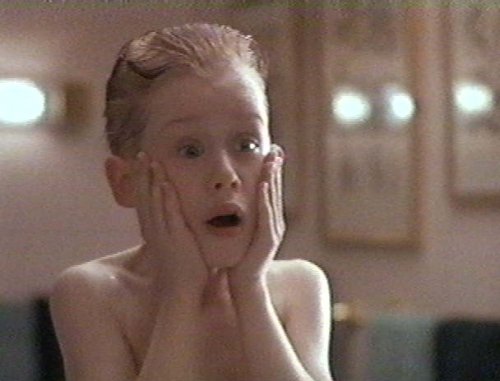
Studios almost left this Christmas staple on the cutting‑room floor. Executives initially saw it as a “small” seasonal comedy with limited box‑office upside, and internal budget fights kept the project hovering in limbo around an $18 million price tag.
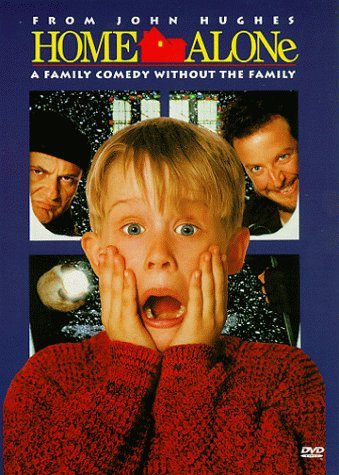
The fear was simple: why spend real money on a kid‑driven holiday film that would vanish from theaters by January?
That cautious logic aged terribly. Once released, the movie exploded past expectations, pulling in roughly $475–$500 million worldwide and camping at the top of the box office for weeks.
That’s a return of more than 25 times its production budget, putting it among the most profitable holiday releases in modern studio history.
What some decision‑makers viewed as disposable seasonal content quietly became a financial engine that still prints money through re‑runs, streaming, and merchandising every December.
The story behind the numbers is part of why fans feel so attached to it. This was not a four‑quadrant superhero bet with guaranteed franchise upside; it was a character‑driven family comedy built on specific jokes, one child star, and a very particular vision of Christmas chaos. The fact that it nearly got shelved—and then turned into a half‑billion global phenomenon—makes every rewatch feel like a win against studio risk‑aversion.
When you press play each year, you are not just revisiting nostalgia; you are revisiting the rare moment when a “small” movie out‑performed the system that almost killed it.
Entertainment
Anne Hathaway Just Turned Her Instagram Bio Into a 2026 Release Calendar
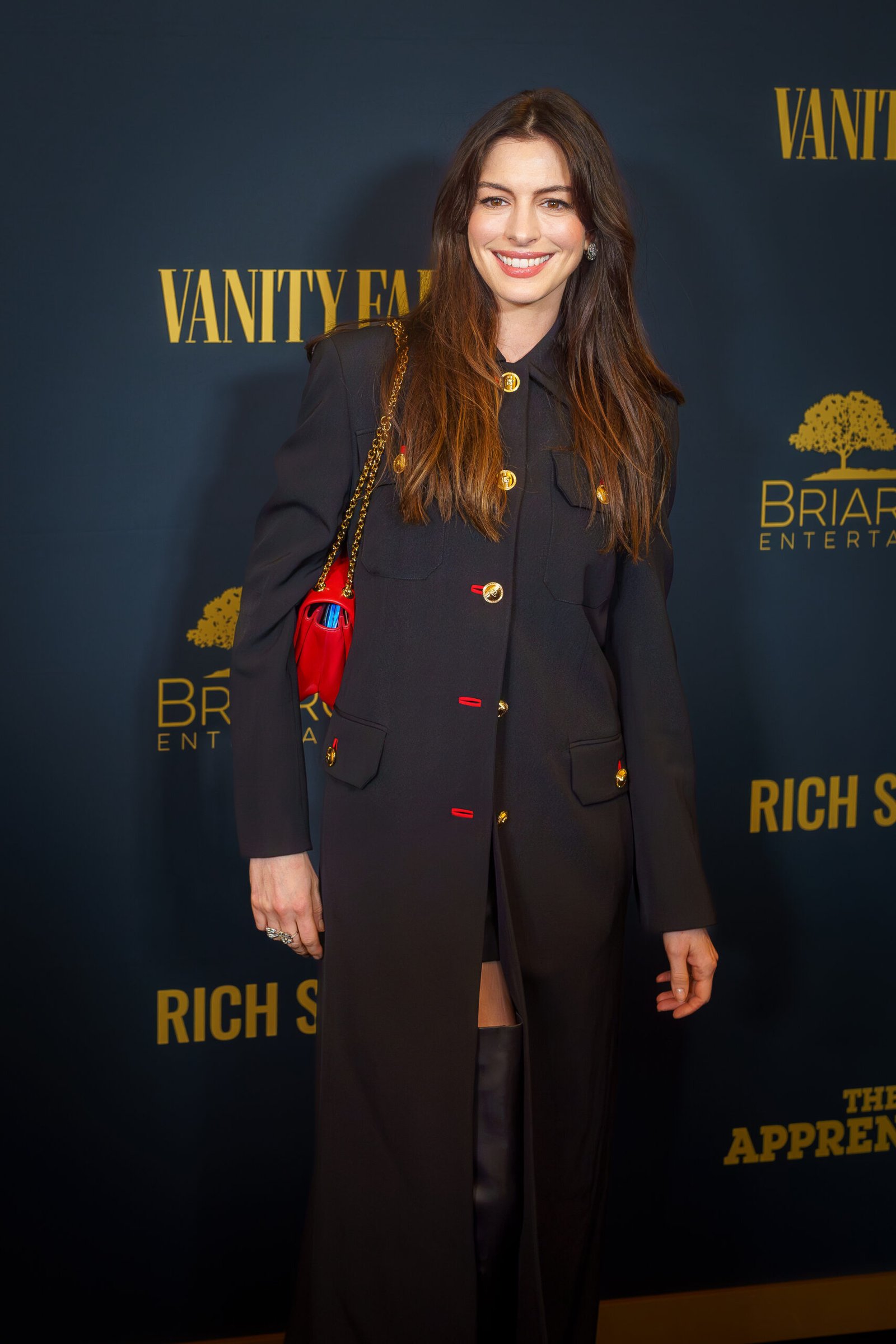
Anne Hathaway has quietly confirmed that 2026 is going to be her year, and she did it in the most Anne way possible: with a soft-launch in her Instagram bio.
Instead of a traditional studio announcement, the Oscar-winning actor updated her profile text with a simple list of titles and dates, effectively revealing a four-film run that reads like a mini festival of her work spread across the year.
For fans, the bio now doubles as a watchlist, mapping out exactly when they will see her next on the big screen.
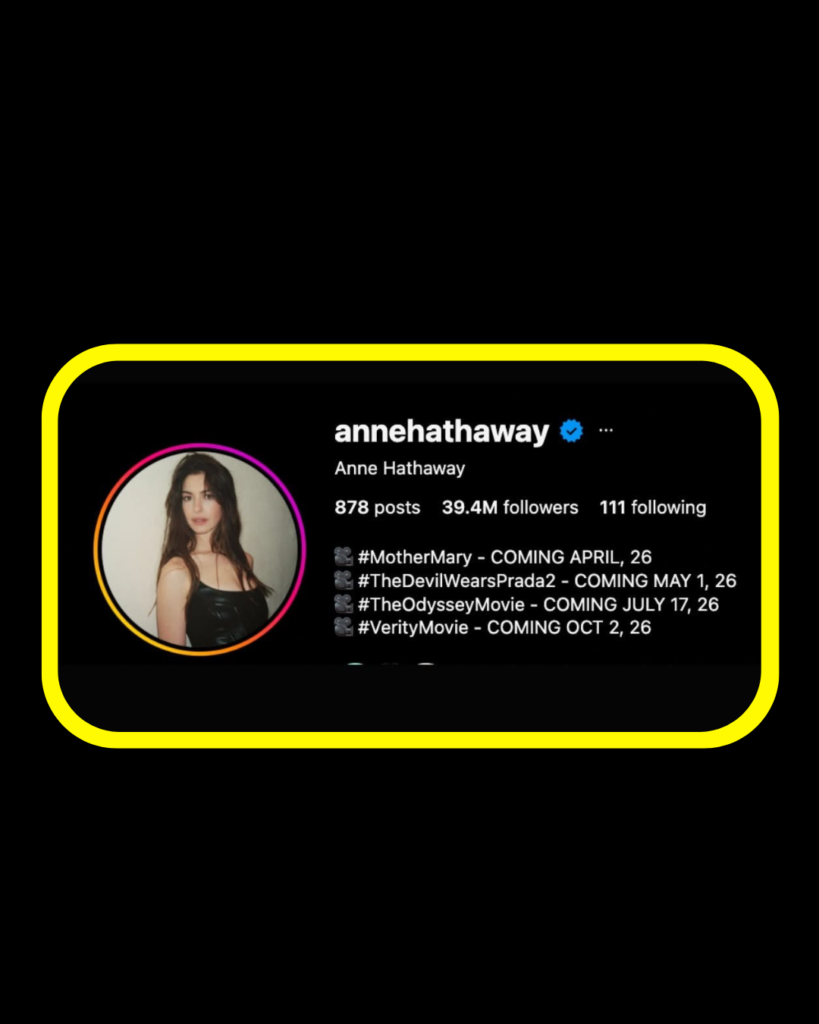
According to the update, Hathaway will kick off 2026 with “Mother Mary,” slated for an April release. The film, backed by A24, casts her as a fictional pop star in a psychological, music‑driven drama that has already started building buzz through early trailer drops and stills. Positioned in the spring, it sets the tone for a year where Hathaway leans hard into challenging, high‑concept material while still anchoring major studio projects.
Just weeks later, she pivots from pop icon to fashion-world nostalgia with “The Devil Wears Prada 2,” now dated for May 1, 2026. The sequel brings her back as Andy Sachs, returning to the universe that helped define her mid‑2000s stardom and remains a staple in meme culture and rewatches. For millennials who grew up quoting the original, the firm release date signals that the long-rumored follow‑up is no longer hypothetical—it’s locked in, with Hathaway front and center.
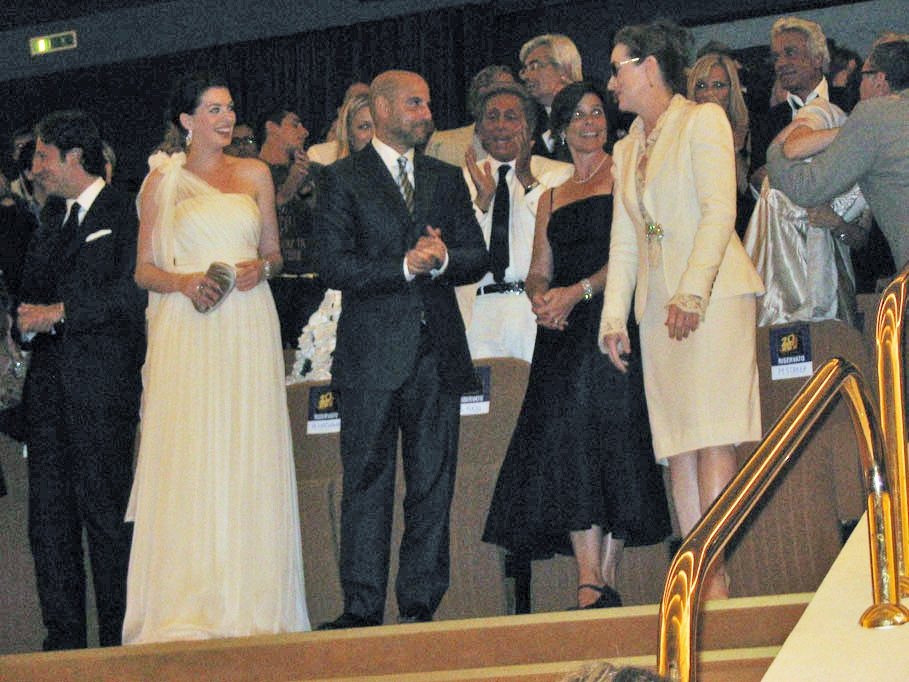
The devil wears Prada
Summer belongs to “The Odyssey,” marked for July 17, 2026. Billed as an ambitious, big‑screen reimagining of the classic tale, the project reunites Hathaway with large‑scale, auteur‑driven filmmaking and promises mythic stakes, prestige casting, and blockbuster spectacle. Its prime July slot suggests confidence from the studio and positions Hathaway as a key face of the 2026 summer season, not just a supporting player in someone else’s tentpole.
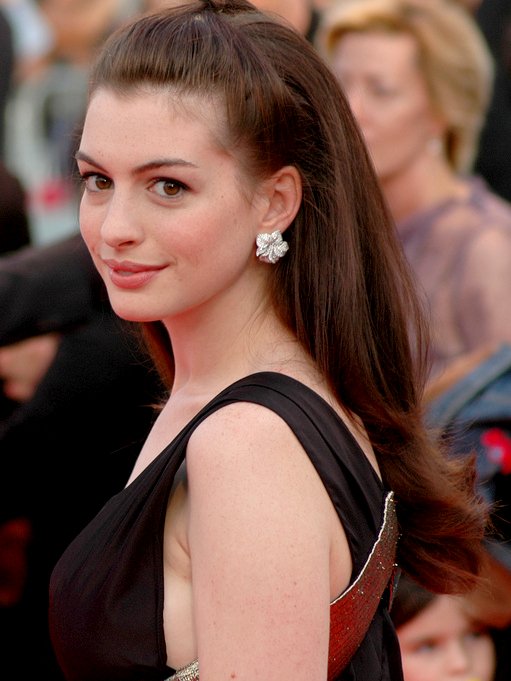
Finally, Hathaway’s bio points to “Verity,” arriving October 2, 2026, rounding out the year with a dark, suspense‑driven turn. Adapted from a hit thriller novel, the film casts her in a psychologically intense role that leans into obsession, secrets, and unreliable narratives—terrain that plays to her ability to toggle between vulnerability and menace in a single scene. Coming at the start of awards season, “Verity” also gives her a potential late‑year prestige vehicle after a run of crowd‑pleasing releases.
What makes this reveal so striking is the casualness of it. In one short line, Hathaway essentially published a studio slate: four movies, four distinct genres, and a timeline that keeps her on screens from spring through fall. For Hollywood, it underlines her staying power as a true marquee name; for fans, it’s an invitation to mark their calendars and prepare for a year where Anne Hathaway isn’t just part of the conversation—she is the conversation.
Entertainment
Colombia’s ‘Doll’ Arrest: Police Say a 23-Year-Old Orchestrated Hits, Including Her Ex’s Murder

Authorities in Colombia say Karen Julieth Ojeda Rodríguez, 23, known as “La Muñeca” (“The Doll”), was arrested in early December on allegations she coordinated contract killings for the Los de la M gang and helped set up the murder of her ex-boyfriend in July. Police reported seizing a 9mm pistol and a revolver during the operation and are testing the weapons against recent homicides in Barrancabermeja, a city battered by drug-war killings this year.

What police allege
Investigators describe Ojeda Rodríguez as a youthful face with a senior role: not a trigger-puller, but a coordinator who relayed orders to sicarios, managed target selection, and handled logistics for a network tied to drug trafficking and extortion in Santander. They say she rose quickly within Los de la M, operating in hot spots like Barrancabermeja and Piedecuesta, where rivalries over territory and revenue have fueled violence.
The July killing at the center
Prosecutors allege she lured her ex-boyfriend, Deyvy Jesús García Palomino (“Orejas”), to a rural meeting on July 23 under the guise of settling a money dispute. When he arrived, two shooters on a motorcycle attacked at close range; he later died at the hospital. Investigators point to recovered messages to argue the meetup was a setup arranged in advance, and they claim she and an accomplice received roughly 4 million pesos—about $1,000—for the hit.
The December takedown
Police announced her capture following a targeted early-December sweep, framing it as a blow to Los de la M’s homicide pipeline.
Alongside Ojeda Rodríguez, officers detained an alleged accomplice known as “Gorda Sicaria” who purportedly passed orders to gunmen, and a man identified as “Leopoldo.”
Forensic tests on the seized weapons aim to link the guns to crime scenes amid a year marked by more than a hundred killings in Barrancabermeja, according to media cited by authorities.

A clear timeline
- July 23: Ex-boyfriend “Orejas” shot after a rural meetup; he dies in hospital the same day. Authorities later cite phone messages as evidence of premeditation.
- Late 2024: Police publicly identify “La Muñeca” as an alleged coordinator within Los de la M tied to multiple homicides in Santander.
- Early December 2025: Targeted operation results in the arrests of Ojeda Rodríguez and alleged accomplices; police seize a 9mm pistol and a revolver for ballistic testing.
Why the case resonates
The contrast between the “Doll” moniker and the accusations of top-level murder coordination has fueled global attention, while the intimate ex-partner setup adds a personal dimension to an already combustible gang narrative. Authorities caution that ballistic and judicial proceedings are ongoing, but they characterize the arrests as a significant hit to a group blamed for a wave of killings in the region.

 Entertainment5 days ago
Entertainment5 days agoWicked Sequel Disappoints Fans: Audience Verdict on For Good

 Entertainment3 weeks ago
Entertainment3 weeks agoAfter Party: Festival Winner for Best Romantic Short

 News3 weeks ago
News3 weeks agoCamp Wackapoo – Rise of Glog Takes Center Stage

 News2 weeks ago
News2 weeks agoYolanda Adams Questions Traditional Views on God’s Gender, Audience Reacts

 Entertainment3 weeks ago
Entertainment3 weeks agoFrancisco Ramos Takes Top Mockumentary Award at Houston Comedy Film Festival

 Politics3 weeks ago
Politics3 weeks agoTrump’s $2,000 Tariff Dividend Plan: Who Gets Paid?

 Politics4 weeks ago
Politics4 weeks agoMamdani’s Victory Triggers Nationwide Concern Over New York’s Future

 Film Production3 weeks ago
Film Production3 weeks agoWhy China’s 2-Minute Micro Dramas Are Poised To Take Over The U.S.






















